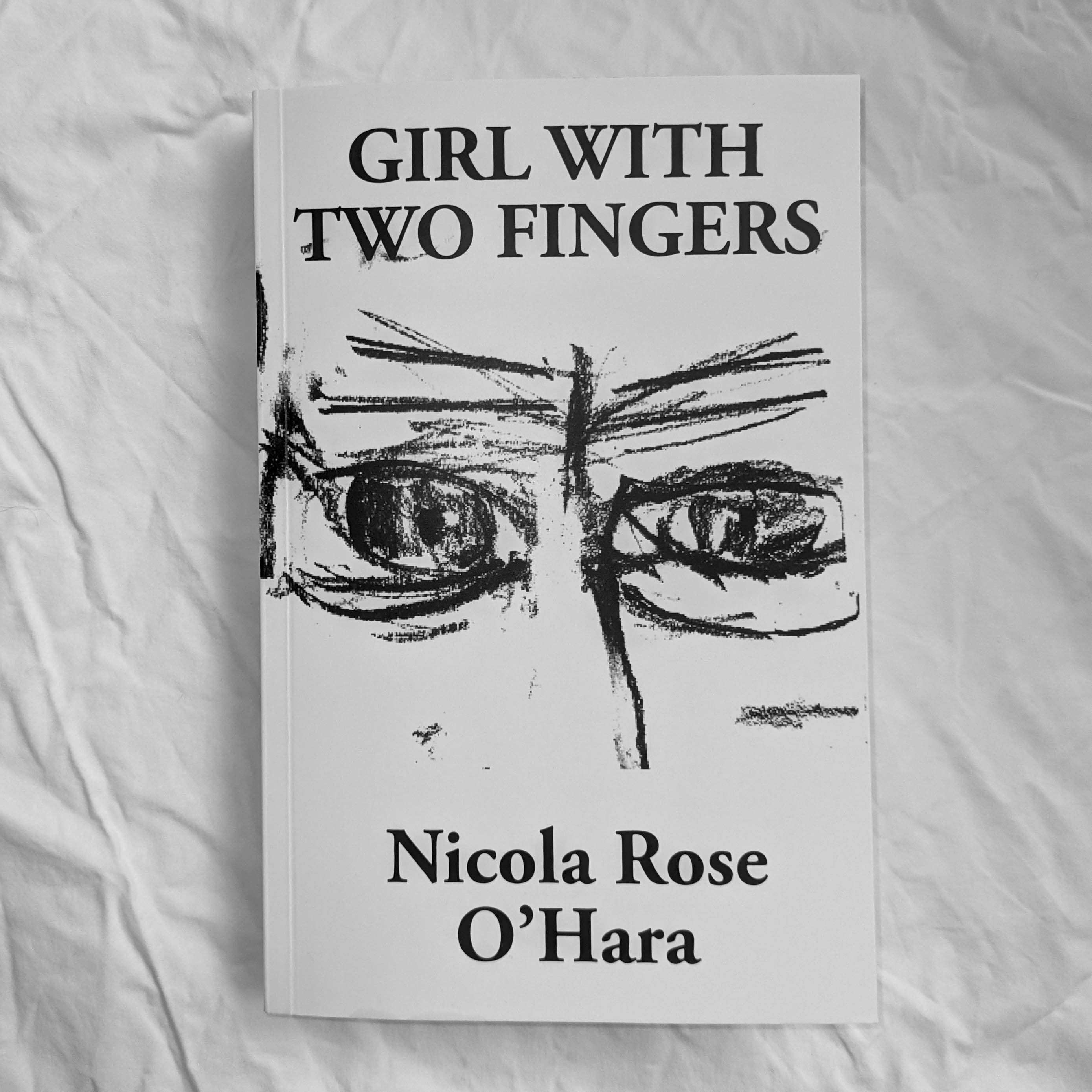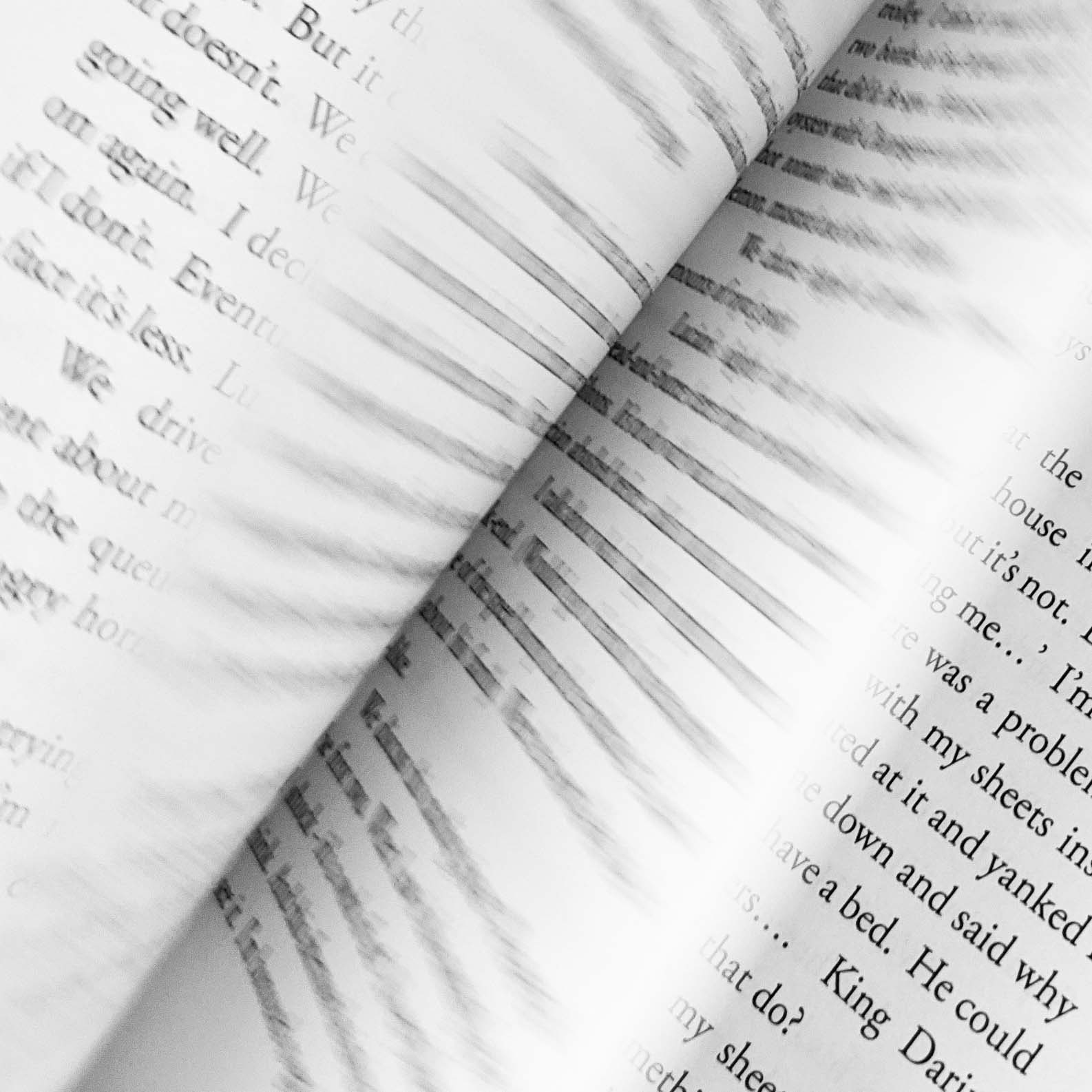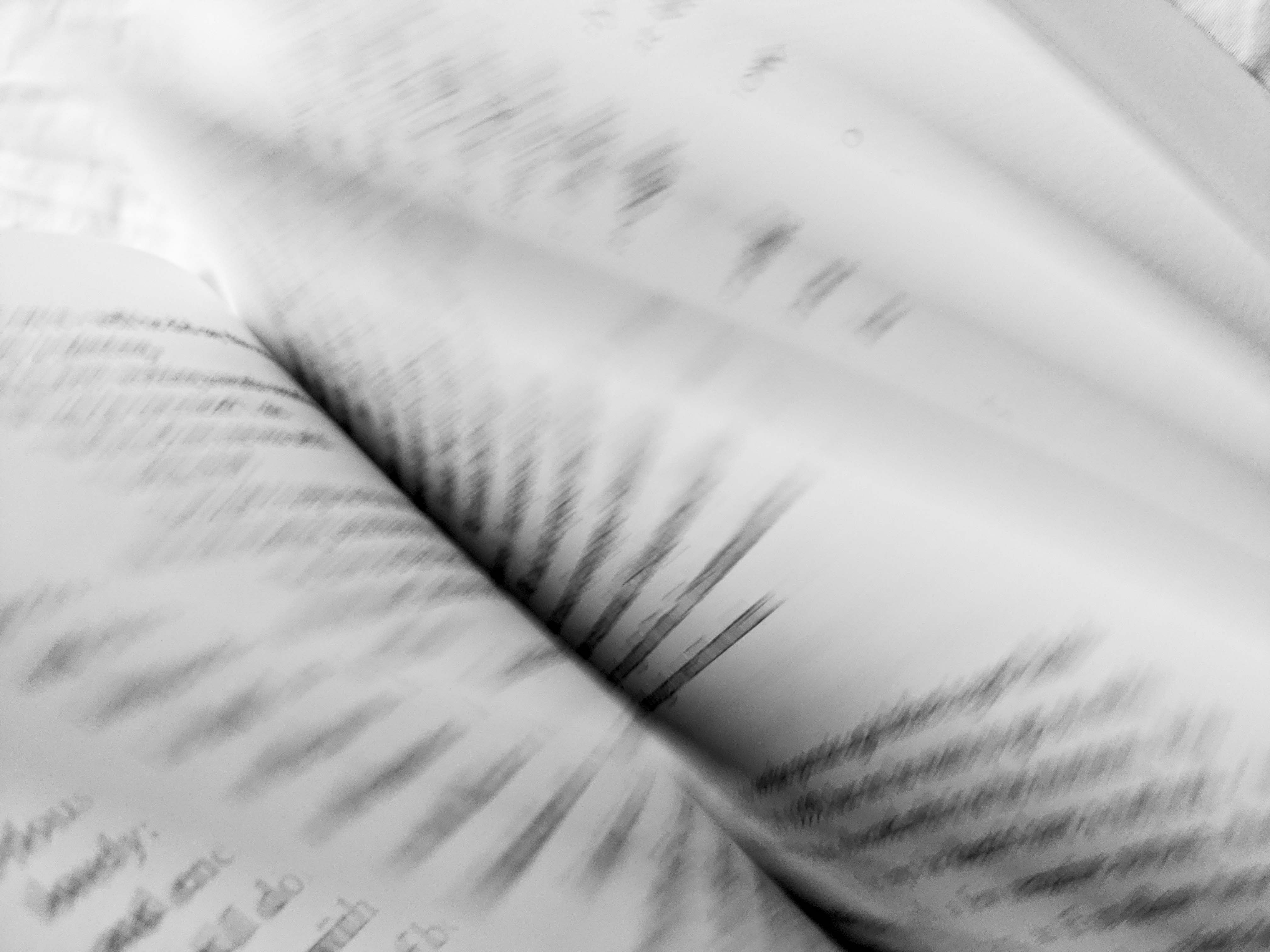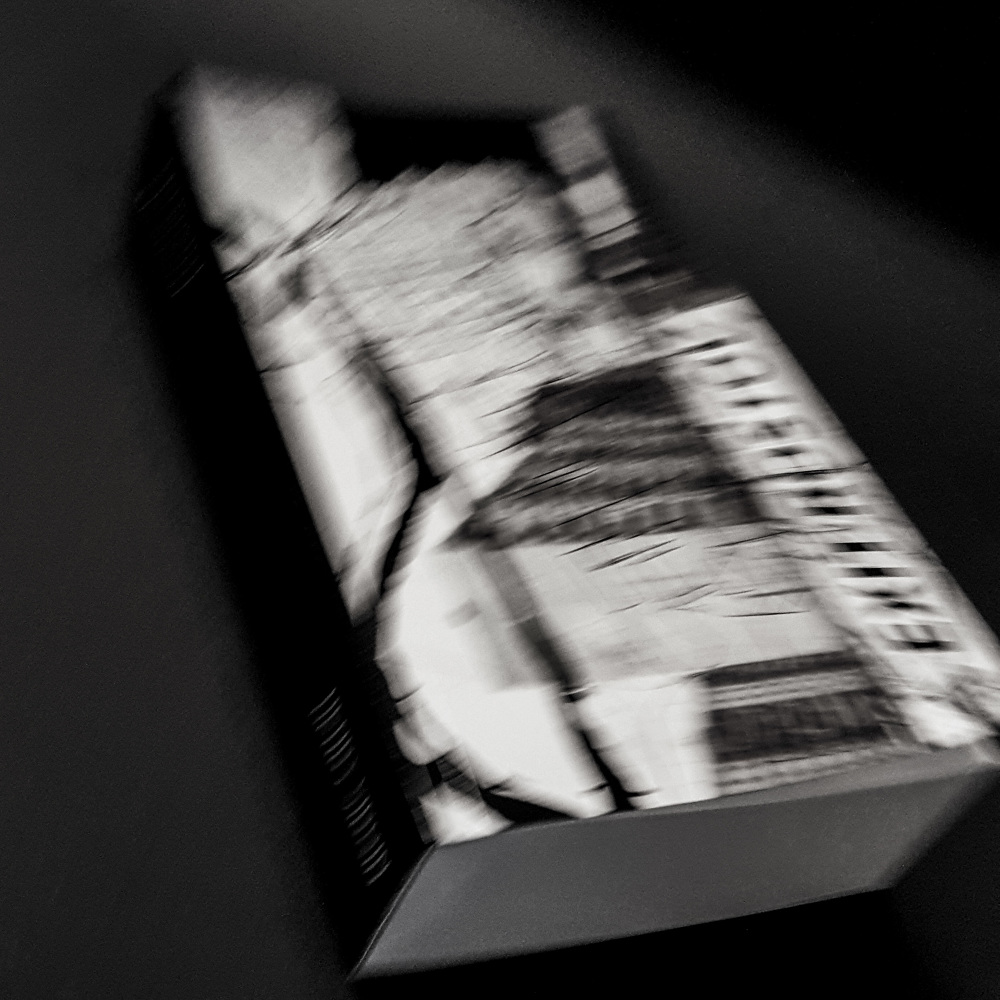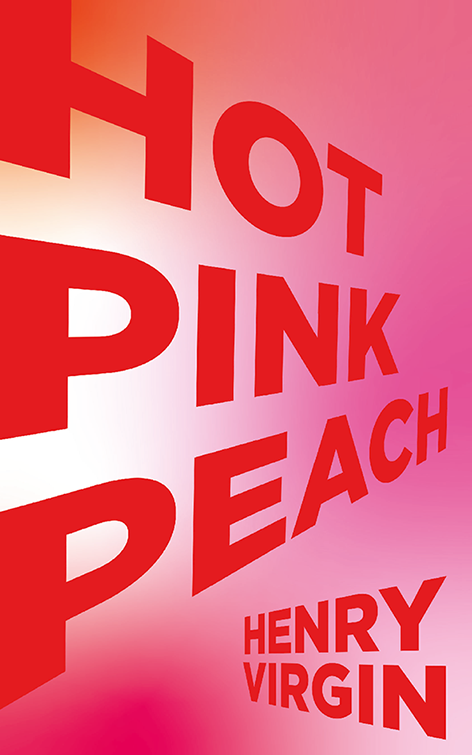
Girl With Two Fingers
Nicola Rose O’Hara
DAILY MAIL - BOOK OF THE WEEK 8.10.2021
Girl With Two Fingers is an edited day to day account of life as a subject of eight portraits by Lucian Freud.
‘…diaries and letters are a form of time travel. They transport the future reader back to the moment the words were written.’
In 1999, a young woman writer returns to London from living in Paris, having been hit by a bus. The accident is a wake-up call: what should she do with her life, how to continue writing? Having known Lucian Freud over a decade, and having previously declined to have a portrait painted by him, she writes asking if he still needs someone to work from Something to do while thinking what to do next.
Writer and painter meet for dinner and an after hours visit to the National Gallery, and agree to start painting the following week.
The studio in Holland Park is unchanged, except everyone’s ten years older. The puppy, Pluto, is an old girl now. The writer has travelled, written, grown up.‘Now I look for the adult in me, instead of the child.’
She keeps a diary, as she always has, until it becomes too much of a chore. After a few weeks, she begins to write to an imaginary confidante instead.
‘Every thing, be it glamorous or mundane, has a particularity of its own. Seeing and recording that particularity is what a writer does. And it’s a form of protest. Because it’s the loudest voice that tells you how to see, and the smallest voice that sees and hears the most.’
As an act of independence she rejects the offered chair and stands for her picture, standing up to the artist. She records, ‘For now, my place on the planet is in this studio, my small space the shapes of my feet carved into the floor.’
The writer’s under no illusion that the picture will be flattering. ‘I’m simply a body for him to paint, one of many bodies. And a face. Another one of many.’ She won’t connect to the finished image.‘I’m not going to recognise myself, or connect with this image. It’ll just be a work of art.’
But writer and painter do connect. This becomes a painting relationship, one picture leads to seven more. Leading to night time phone calls and the painter saying ‘I’m beginning to depend on you.’
‘It feels a bit like Shakespeare’s The Tempest up here. The studio our island. Lucian as Prospero, with ‘art to enchant’. The shopper as Ariel, and me as a stand-in Miranda.’
But not everybody’s happy with this painting relationship. And it’s proving too much for the subject herself. Despite being committed to the painter’s work, she’s keen to regain her freedom. ‘I think he knows I’m starting to want to break free. That’s a kind of magnetic energy for him.’
Face to face: writer and painter, woman and man, the seer and the seen. And the unseen. Because that’s the joy of writing: it’s seeing what can’t be depicted in paint.
On a trip to New York May 2000, standing unnoticed in a gallery between two of the portraits of herself, the writer looks in to the pictures she’s - depicted as - looking out from, and asks if the images are more about the painter than the painted: ‘…his view, his space, his paint, his colours, his brushes, his language, his desire to control and portray. His feelings. His life events. And the distortions, the freuding, are his signature. They are autobiographical naked portraits of Lucian. Hiding in plain sight.’
‘The stories that bring a fixed portrait into being are much more fun than the finished thing itself.’
‘What’s lovely about (a friend),’ says Lucian ‘and you do it too, is you describe people by what they say.’
‘What do you mean?’
‘Well you repeat what it was they said.’
Beautifully written, poignant and evocative, testament to the world of the studio, witness to the act of portraiture.
‘Historically, men make images of women. Men tell us how to see and understand those images. They narrate them. And then they market what they have made. So the images of women are about men.’
Girl With Two Fingers is the female gaze, a detailed subject’s account of the making of eight works of art.
www.nicolaroseohara.co.uk
Available from:
Daunt Books
The Notting Hill Bookshop
Koenig Books at Serpentine Galleries
The London Review Bookshop
The Guardian Bookshop
Books Etc
Book Depository
Waterstones (Online)
Amazon
Distributed by
CENTRAL BOOKS
Gardners
Paperback
English
July 2021
ISBN 978916414020
Published by Schnoff
Exit Rostov — Henry Virgin
“A great literary, poetic, and artistic read”
“This book initially reminded me of Paul Auster’s masterpiece, Leviathan”
Travelling through Central Asia in 1996, Frederick Lyre learns of his best friend's disappearance and changes plans to go and find him. Picking up the trail in Moscow, he ventures south to the post Soviet depths of Rostov-on-Don and further into the hinterlands of the fragmented Soviet Union, where he is led deeper into the tangled fate of his oldest friend.
Uncovering hidden characteristics and unexpected motives, Frederick fears that his friend, presumed dead, has been caught up in a tragic sequence of events leading to his destruction. As a rite of passage, a journey of discovery, a travelogue and a psychological portrait of friendship, the novel draws the reader into the hidden world of being which beats beneath the semblance of reality.
The story is intricate and evokes another world, of suburban Rostov tenements, of dachas in the Steppe, of Tashkent, Khiva, Bukhara, Samarkand, Moscow, the Nyeskuchniy Gardens, the River Don, making love in Tanais, of the sea of Asov, the northern Caucasus, of Stavropol, of refugee camps in Ingushetia, mountains, and field hospitals in the Caucasus, of fin de siecle London, and Aquitaine. From the viewpoint of Frederick, a young man of 23yrs, seeking his friend Cazimir, in the Northern Caucasus in 1996, the narrative blends observation about Russian people and culture, the Don Steppe, post-Soviet urbanscapes at the turn of the century with intimate and sensitive meditations on love, sex, death, religion, God, one's place in society and money, and investigates the potent forces of sexual desire, attraction and adolescent mental health, coming to terms with the powerful subconscious drives of lust, desire, and obsession.
Written as an interior dialogue, with reported conversation, notebook extracts, poems and transcriptions, the text is varied, raw and sometimes uncomfortable. The voice of the narrator Frederick is constant, but on discovery of notebooks written by Cazimir, we learn from Cazimir's first-hand writings, which illuminate his thoughts, despairs, motivations and obsessions. Exit Rostov is a story of friendship and the ends to which one will go to save it. A story of love in its various forms, of the unrequited, the fulfilled, of new love and love that has run its course. A story of how individuals and companies took over ex-Soviet assets and territories, in the aftermath of the Soviet Union's demise, with Public-Private Partnerships. A story of intelligence gathering, Sufi-Islam, of art's supremacy over politics and how other people seek to control others at any cost. A story of how setting out with the best intentions can be fatal. It's a story of discovery, learning how to find people hiding in the layered depths of their divided and most essential, secret selves.
---
"...This is a very different book. It is fiction but it offers a sumptuous level of history and culture as the story bowls along... it is quite a Brechtian experience..." @Tripfiction
“A fascinating book.” Charles Cumming
----
“...I remember feeling like this the first time I picked
up The Catcher in the Rye. That certain je ne sais
quoi that sticks with you even after you close the
book.”
“The imagery in this book - both in prose and
art work is powerful. I wasn’t sure if I was going
to like this at first. The poetry was odd...and the
illustrations were haunting”
“...something about this book pulled me in I can’t
quite put my finger on it, but somewhere in the
off-beat style I got lost in a story of friendship,
betrayal, discovery, and travel.”
“What I loved...was the integration of media:
photos, poems and paintings that gave the
narrative additional depth, placing the reader in
the visual field of all the main events and tracing
the narrator’s profound journey through love and
war.”
www.henryvirgin.com
Distributed by Central Books
Available from:
PUSHKIN HOUSE
Book Depository
Books etc
Amazon.co.uk
KINDLE
Daunt Books Marylebone – Marylebone High St
Daunt Books Cheapside – nr St Pauls
Foyles Charing Cross – on the shelves (don’t buy online)
London Review Bookshop near The British Museum
Hatchards Piccadilly
Paperback
English
2019
ISBN 978916414006
Published by Schnoff
Hot Pink Peach — Henry Virgin
Hot Pink Peach is a book of poetry containing two poems : The Cerebral Sacristy and Zapadny.
Written between 1996 and 1999, in London and Rostov, the poetry is lyrical, experimental, abstract, akin to the verse of a dadaist poète maudit, with strains of the French and Russian symbolists.
By no means light, this apostatic, confessional, transgressive, 'sturm und drang' collection is presented as the eponymously invoked Hot Pink Peach, fragged from the furnaces of poetic development.
или это неопубликованные стихи Казимира?
www.henryvirgin.com
Available from:
Central Books
Book Depository
BOOKS etc
Amazon.co.uk
Waterstones
Paperback
English
2020
ISBN: 9781916414013
Published by Schnoff

